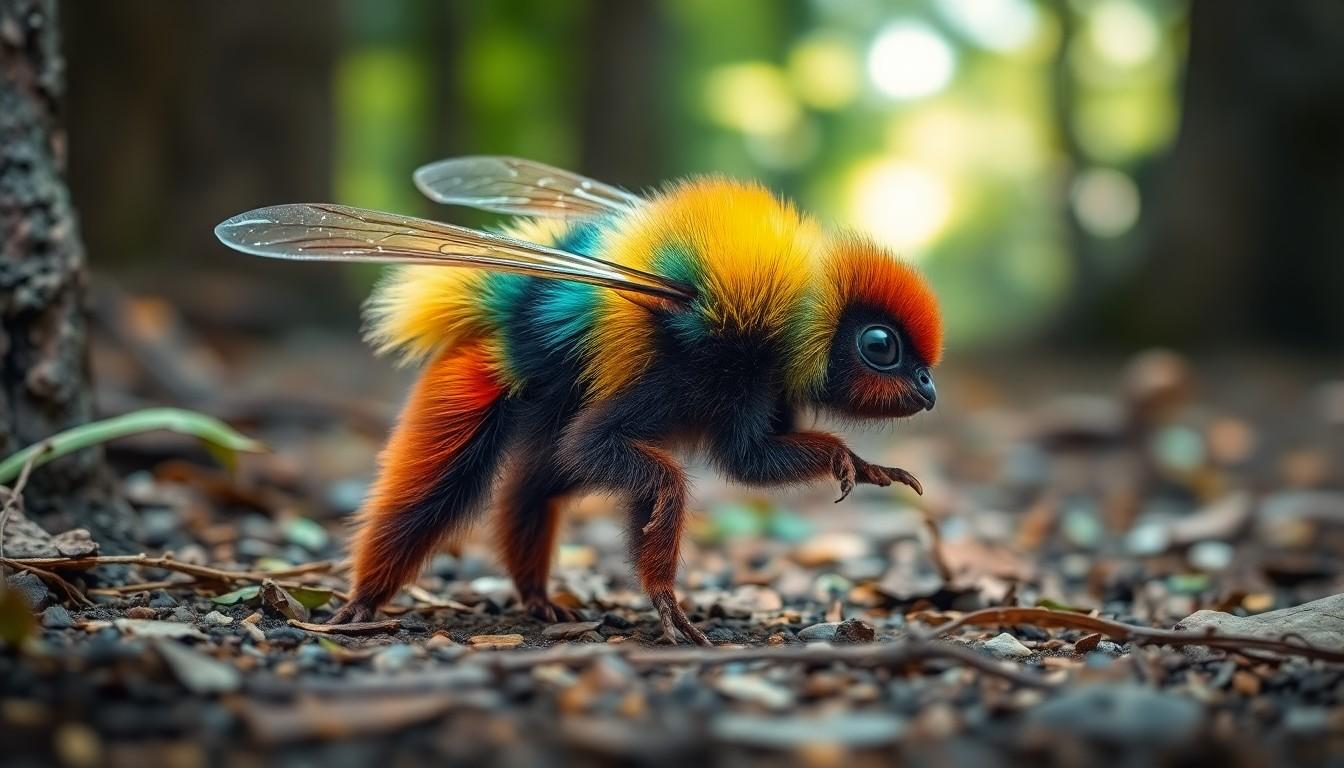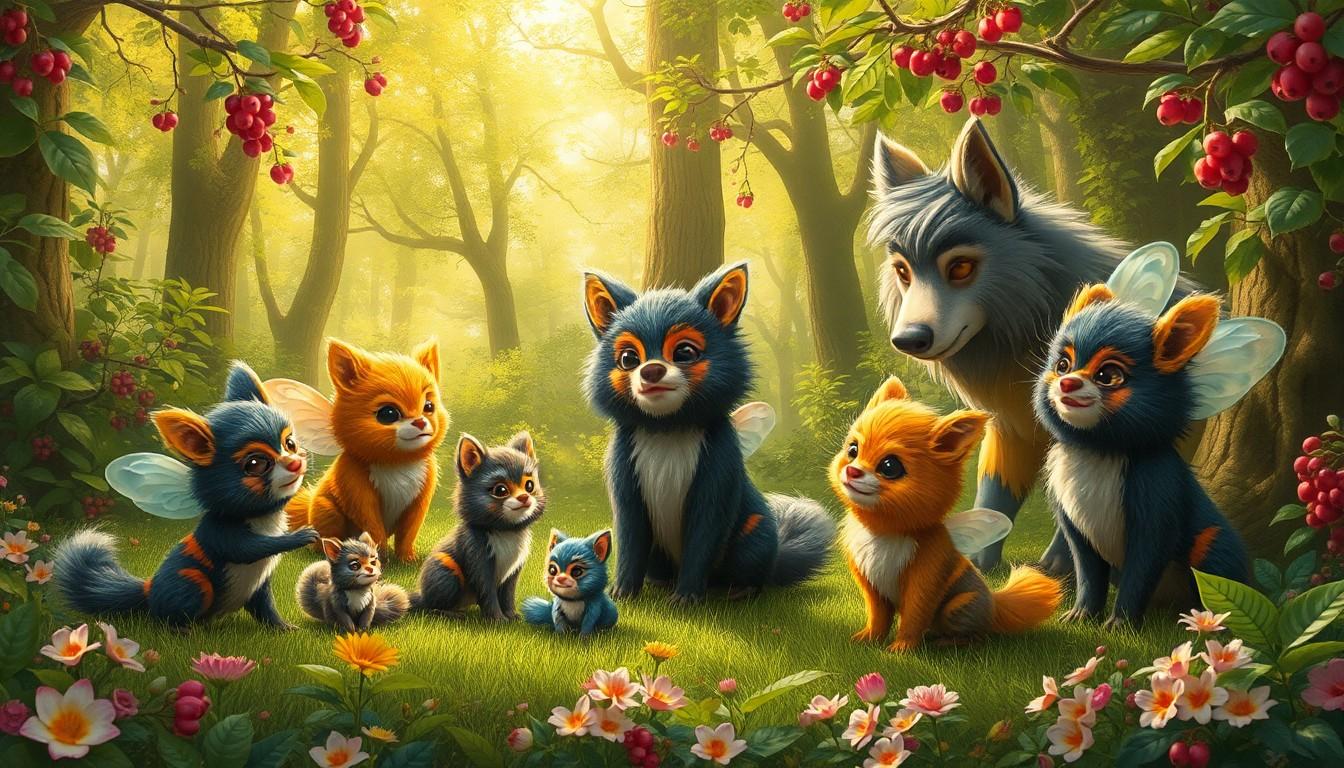If you’ve ever found yourself pondering the mysteries of the universe, you might have stumbled upon the quirky world of appoebees. These delightful little creatures might sound like something out of a sci-fi flick, but they’re as real as your morning coffee—well, maybe not that real. With their unique characteristics and playful antics, appoebees have captured the hearts of many, leaving a trail of curiosity in their wake.
Overview of Appoebees
Appoebees represent a captivating type of creature that sparks wonder. These creatures, while seemingly fictional, embody enchanting characteristics and whimsical behaviors.
Definition and Origin
Appoebees derive their name from the blend of vibrant features and elusive nature. These creatures first emerged in folklore, often depicted as playful beings that inhabit lush forests and magical landscapes. Legends suggest their origins tie back to ancient civilizations, where they were revered for their ability to inspire creativity and joy. Their appearances vary, showcasing brightly colored fur, varying sizes, and unique markings. Such diversity enhances their allure, allowing individuals to relate to their whimsical essence.
Importance in the Ecosystem
Appoebees contribute significantly to their ecosystem, facilitating important ecological roles. They maintain balance by promoting flora growth through their activities. For instance, these creatures serve as pollinators, transferring pollen as they interact with various plants. Additionally, they assist in seed dispersal, ensuring that vegetation thrives across their habitats. Their playful nature also engages other species, fostering interactions that support biodiversity. By enriching their environment, appoebees play a vital part in sustaining the health and vitality of their ecosystems.
Characteristics of Appoebees

Appoebees possess distinctive traits that enhance their mystique. They exhibit a variety of engaging features, ranging from their vibrant fur to their playful demeanor.
Physical Traits
Physical traits of appoebees include bright, multicolored fur that varies in patterns and textures. Sizes range from small enough to fit in a human palm to larger than a dog. Unique markings on their bodies create an individualistic appeal. Their large, expressive eyes showcase curiosity and intelligence. Appoebees also possess agile limbs, enabling quick movement through their forest habitats. Unlike any other creature, their ability to blend into surroundings adds to their enchanting presence.
Behavioral Patterns
Behavioral patterns of appoebees reflect their playful nature. These creatures often engage in social interactions, displaying complex communication through sounds and movements. Curiosity drives them to explore their environment and interact with other species. Appoebees frequently participate in games, showcasing agility and spontaneity. They exhibit nurturing behaviors, often taking care of young or weaker inhabitants in their ecosystems. Regularly, they foster growth by pollinating flowers and dispersing seeds, contributing positively to their habitat. Their interactions with flora and fauna highlight their essential role in maintaining ecological balance.
Habitat and Distribution
Appoebees thrive in diverse environments, showcasing their adaptability. These creatures favor lush forests filled with vibrant flora and enchanting landscapes.
Preferred Environments
Dense woods and meadows represent their preferred habitats. Appoebees often inhabit regions rich in flowering plants and berries, which provide ample food sources. They are frequently found in areas offering plenty of cover, such as thick underbrush, enabling them to camouflage effectively. These environments support their playful behaviors and social interactions.
Geographic Range
Appoebees occupy various regions worldwide, primarily in temperate and tropical zones. They are commonly spotted in North America, Europe, and parts of Asia, with established populations in rainforests and highlands. Their distribution extends to islands known for unique ecosystems, where they contribute significantly to local biodiversity. Each location highlights different fur colors and patterns, reinforcing regional adaptations.
Interaction with Other Species
Appoebees interact with various species, forming complex relationships that illustrate their role in ecosystems. These interactions include both predator-prey dynamics and symbiotic partnerships.
Predators and Prey
Larger animals in the ecosystem sometimes prey on appoebees. Birds of prey such as hawks and owls, alongside terrestrial predators like foxes, pose threats to these vibrant creatures. Camouflage serves as a survival mechanism for appoebees, as their ability to blend into foliage helps them evade detection. Small mammals, in contrast, often thrive due to their stable existence within the same habitats. Appoebees serve as a food source for various predators, contributing to the balance of their local environments.
Symbiotic Relationships
Appoebees engage in mutualistic interactions with several plant species. Their role in pollination enhances floral reproduction rates, benefiting both parties. Plants provide nectar as a food source, attracting appoebees to thrive. Additionally, these creatures facilitate seed dispersal, aiding plant distribution across regions. Such relationships foster biodiversity, enriching the ecosystems appoebees inhabit. Through these interactions, they play a crucial role in supporting both their own species and the surrounding environment.
Conservation Status
Appoebees face several challenges that threaten their survival.
Threats to Appoebees
Habitat loss ranks among the primary threats to appoebees. Deforestation and urbanization reduce their lush forest environments, disrupting their ecosystems. Additionally, climate change impacts their habitats, altering food availability and weather patterns. Pollution poses another significant risk, affecting the air and water quality in the regions they inhabit. Human activity, including agriculture and development, introduces disturbances that may lead to declining appobee populations.
Efforts and Strategies for Protection
Conservation efforts focus on habitat preservation to support appoebee populations. Organizations work to establish protected areas where these creatures can thrive without human interference. Education initiatives aim to raise awareness about the importance of appoebees in ecosystems. Community involvement plays a crucial role; local groups participate in reforestation projects and sustainable land use practices. Research also furthers understanding of their ecological roles, providing data to inform future protections. These concerted efforts contribute significantly to appoebee conservation and the maintenance of biodiversity.
Conclusion
Appoebees embody the wonder of nature’s creativity and playfulness. Their vibrant presence in ecosystems highlights the intricate balance of biodiversity and the importance of conservation efforts. By understanding and appreciating these whimsical creatures, individuals can contribute to preserving their habitats and ensuring their survival.
The enchanting traits and behaviors of appoebees serve as a reminder of the magic that exists within our natural world. As curiosity continues to drive exploration and discovery, the future of appoebees depends on collective action to protect their environments. Embracing this responsibility can foster a deeper connection with the beauty and complexity of life on Earth.




